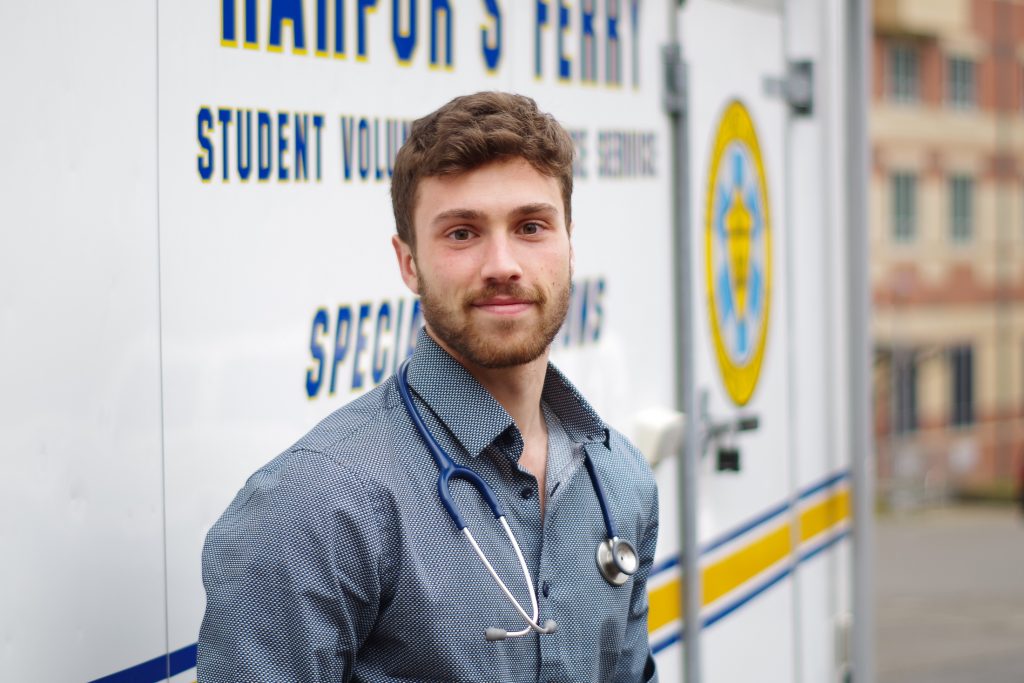
The creation of human organs through 3-D printing may soon become a reality, thanks to researchers like Thomas Hays, a senior majoring in biomedical engineering.
Hays, who will attend Stony Brook University School of Medicine in the fall, got involved with laboratory research as a sophomore and pursued a 3-D printing project with Kyle Reeser, a second-year graduate student studying biomedical engineering, and Sebastian Freeman, a fourth-year Ph.D. student studying biomedical engineering. The goal of the project is to create an artificial pancreas through 3-D printing.
“It is essentially a layer-by-layer technique where they overlap different 2-D layers of material until you have a 3-D product,” Hays said. “[We] took that technology and applied bio-printing to the title. You take different materials, different cells and create an organ in that sense.”
The process requires a bioengineer to take autologous cells — cells from one’s own body — and layer them repeatedly, creating 3-D tissue to be reinserted into a patient’s body. Autologous cells are used because, almost always, our bodies reject foreign tissues and organs, whereas they readily accept our own developed cells.
“The goal is to take a stem cell, differentiate that into a pancreatic cell, or whatever cell you need, and then put it in a reservoir,” Hays said. “Then they can print that into 3-D layers to create your final organ. You have to have vasculature in there, too. It’s hard to nail down just a few things to put in [the printer], but it is a lot of cells and growth factors.”
Tissues with less vasculature, or fewer blood vessels in them, such as skin and cartilage, can already be processed in the 3-D printing world. Hays estimated that it will be about a decade, if not longer, until we begin to see some of the more vascular structures enter the medical world through 3-D printing.
“Say you have Type 1 diabetes, you can’t just get a new pancreas and call it a day,” Hays said. “Maybe in the future, they will be able to take your own cells, if you have Type 1 diabetes, print this organ for you — which is your own cells — and put it back in your body.”
Hays explained that he developed his clinical skills through his involvement with Harpur’s Ferry ambulance, and the hands-on engagement taught him how to work on a team.
He and partner Rushi Shah, a senior majoring in biomedical engineering, built an automated respiratory device. Hays explained that this was the moment he realized that he wanted to mix the research component of biomedical engineering with the clinical applications of it.
The device made use of a standard emergency medical services mask, and inserted into it a thermistor, or electrical resistor whose resistance is reduced by heating. This device is practical in determining if an individual is hypo- or hyperventilating, a key vital to take note of when in an emergency situation.
Although the automated respiratory device cannot be used by Harpur’s Ferry due to U.S. Food and Drug Administration laws, Hays said it was interesting enough to simply watch the process unravel from an innovative idea to a real product.
“It was kind of cool to see something firsthand that you interface with, identify the problem and take it to the engineering board,” Hays said. “There are times when you have more tabs open than you have solutions to a problem, but in the end, you take a step back and realize what you are doing is actually kind of cool. Once you realize the impact of it, it motivates you to keep going.”


